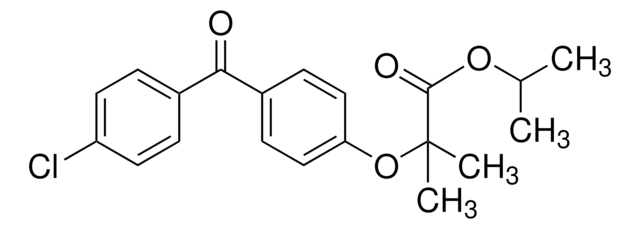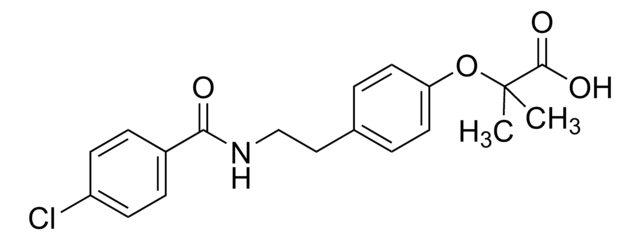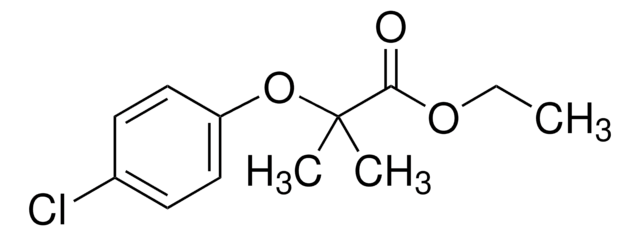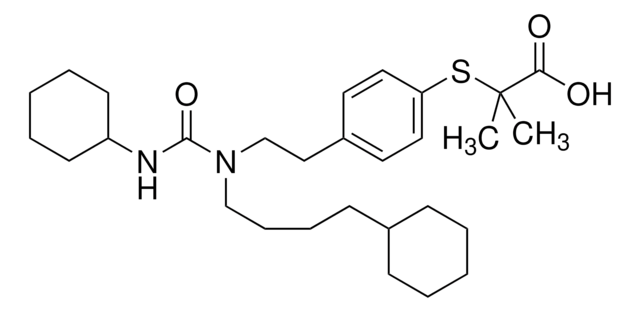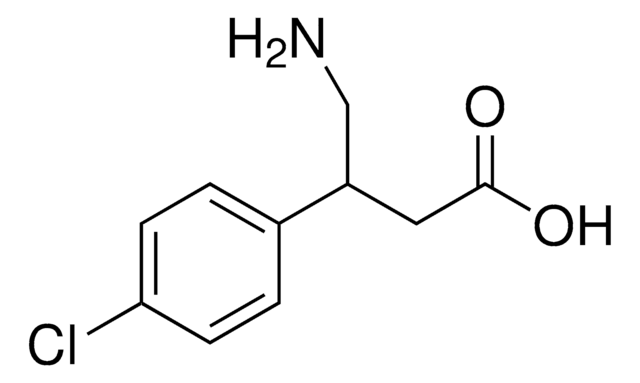C0330
Ciprofibrate
Sinónimos:
2-[p-(2,2-Dichlorocyclopropyl)phenoxy]-2-methylpropanoic acid
About This Item
Productos recomendados
form
powder
Quality Level
storage temp.
2-8°C
SMILES string
CC(C)(Oc1ccc(cc1)C2CC2(Cl)Cl)C(O)=O
InChI
1S/C13H14Cl2O3/c1-12(2,11(16)17)18-9-5-3-8(4-6-9)10-7-13(10,14)15/h3-6,10H,7H2,1-2H3,(H,16,17)
InChI key
KPSRODZRAIWAKH-UHFFFAOYSA-N
Gene Information
human ... PPARA(5465)
¿Está buscando productos similares? Visita Guía de comparación de productos
Biochem/physiol Actions
signalword
Danger
hcodes
pcodes
Hazard Classifications
Carc. 1B
Storage Class
6.1C - Combustible acute toxic Cat.3 / toxic compounds or compounds which causing chronic effects
wgk_germany
WGK 3
flash_point_f
Not applicable
flash_point_c
Not applicable
ppe
Eyeshields, Gloves, type P3 (EN 143) respirator cartridges
Elija entre una de las versiones más recientes:
¿Ya tiene este producto?
Encuentre la documentación para los productos que ha comprado recientemente en la Biblioteca de documentos.
Los clientes también vieron
Chromatograms
application for HPLCNuestro equipo de científicos tiene experiencia en todas las áreas de investigación: Ciencias de la vida, Ciencia de los materiales, Síntesis química, Cromatografía, Analítica y muchas otras.
Póngase en contacto con el Servicio técnico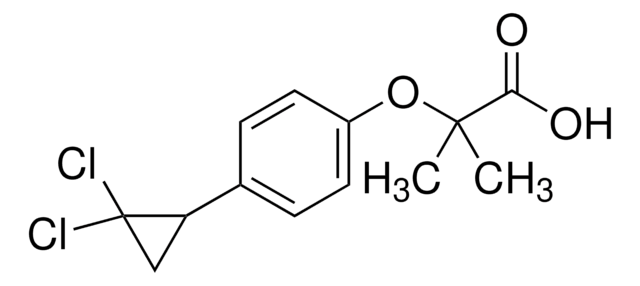
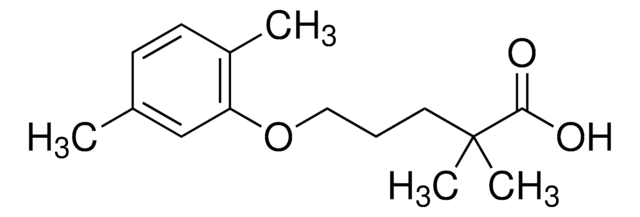
![2-[4-(4-Chlorobenzoyl)phenoxy]-2-methylpropionic acid 95%](/deepweb/assets/sigmaaldrich/product/structures/779/056/45779a0b-0c78-49b4-895b-eae07474ee2e/640/45779a0b-0c78-49b4-895b-eae07474ee2e.png)
